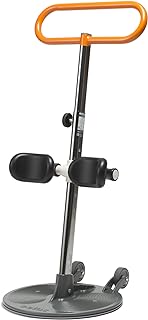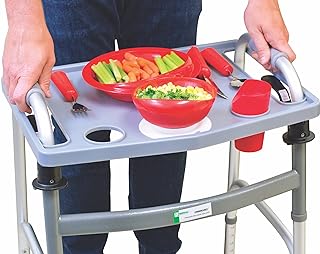5 important factors worth considering when looking for the best standing frame for disabled
When it comes to helping people with disabilities have more freedom to move and be independent, choosing a standing frame is not just about practicality, but also about how it can deeply affect their daily life in emotional ways. Picking the right standing frame involves thinking about a lot of things beyond just how well it works. It’s important to consider things like personal comfort, how easy it is to use, and how it can help with mental well-being. When we are looking to buy a standing frame for someone with a disability, we need to understand how important it is to think about things like making it customized for them, how strong and long-lasting it is, how easy it is to use, and how much support it can offer in order to improve their quality of life in a well-rounded way.
See our guide to the best standing frame for disabled.
Size and adjustability to accommodate individual needs
When buying a standing frame for people with disabilities, it’s important to think about size and how easy it is to adjust. These things affect how comfy and useful the frame will be. If the frame doesn’t fit right, it can cause pain and other health problems. So, you should know the person’s measurements and what they need before buying one. A standing frame that can be adjusted easily can be changed to fit the person’s needs. This makes them feel more comfortable and helps them do things on their own with confidence.
Having an adjustable standing frame means you can change it as the person’s needs change. You can adjust it for their height, weight, or support needs without needing to buy a new one. By focusing on size and adjustability when choosing a standing frame, you’re not just making things easier—you’re giving people with disabilities the power to have a comfortable and fulfilling life with the support they need.
Weight capacity to support the user safely
When choosing a standing frame for someone with a disability, it is important to consider the weight capacity of the equipment. The weight capacity of a standing frame is crucial for keeping the user safe and stable while standing or transferring. It’s essential that the standing frame can support the individual’s weight without putting them at risk of injury. By choosing a standing frame with the right weight capacity, caregivers and individuals can feel confident that the equipment will provide the support needed for daily activities and therapy.
Having a standing frame with a good weight capacity not only improves safety but also boosts independence and confidence for the user. A strong and reliable standing frame allows individuals with disabilities to participate in standing activities with more freedom and security. By investing in a standing frame that can comfortably support the user’s weight, caregivers can create a positive experience that enhances physical well-being and quality of life. Essentially, the weight capacity of a standing frame is essential for ensuring individuals with disabilities can safely engage in standing activities and benefit from standing therapy both physically and mentally.
Comfort and padding for extended use
When looking at a standing frame for people with disabilities, it’s important to think about how comfortable it is. A standing frame with good padding not only provides physical support but also makes the user feel better overall. For those who use these frames for a long time, having enough padding can help prevent discomfort, pressure sores, and other health problems. It’s crucial to choose a standing frame that is comfortable because it can directly affect the user’s well-being and make using the frame easier and more enjoyable.
In addition, comfort and padding are key in making sure people use their standing frame regularly. When the focus is on user comfort, individuals are more likely to use their assistive device regularly, which is important for improving muscle strength, circulation, and overall physical health. Buying a standing frame with good padding not only ensures the user’s comfort but also shows a commitment to their long-term health and well-being. Ultimately, a well-padded standing frame can make a big difference in the daily lives of people with disabilities, providing both physical support and emotional comfort as they tackle their mobility challenges with confidence.
Stability and support to prevent falls or injuries
When buying a standing frame for people with disabilities, it’s important to focus on stability and support. This can help prevent falls and injuries. The main goal of getting a standing frame is to improve mobility and independence. That’s why it’s crucial to pick a model that gives strong support and keeps the person standing securely. A good, solid standing frame not only helps with physical stability but also boosts confidence in the user. This lets them do daily activities with a feeling of safety and freedom.
By making stability and support a priority in the selection process, caregivers and users can cut down on accidents and improve overall comfort and well-being. A standing frame that gives enough support not only lowers the risk of falls but also helps with proper alignment and weight distribution. These are important for keeping muscles strong and avoiding strain. In the end, putting stability and support first when choosing a standing frame is a proactive step that improves safety and helps people feel empowered and independent. These are key factors in helping people with disabilities live a fulfilling and enriching life.
Mobility and accessibility features for ease of use
When buying a standing frame for people with disabilities, it’s important to focus on features that make it easy to use and help users move around on their own. Features like adjustable height and swivel wheels can make a big difference in how well the frame works. Other options like padded knee supports and adjustable chest straps not only make the frame more comfortable but also help users keep a good posture, which is really important for people with mobility issues. Adding these features can make standing frames more effective and easier to use, improving the quality of life for users.
Designing standing frames for people with disabilities should prioritize making them inclusive and easy to use for everyone. By including features like simple controls and easy adjustments, manufacturers can make sure that people of all abilities can use the equipment with confidence. Using strong materials and ergonomic design can also make the frames last longer and be more helpful for people with disabilities. Overall, focusing on features that improve mobility and accessibility not only makes standing frames more practical, but also helps include and empower people with disabilities.
Conclusion
Recognizing the positive effects of standing frames for people with disabilities goes beyond just helping them move around. It represents a way for them to gain more independence and feel better overall. As we work towards making sure everyone has access to things they need and feels included, we must understand how important standing frames are in helping people with different abilities feel empowered. Standing frames don’t just improve physical abilities – they also change how society sees people with disabilities, promoting a world where everyone has the right to stand tall, both physically and emotionally. Want more info on cookie scoops, check the best cookie scoops.


